

Matt Campbell
2025 Porsche 911 Carrera T review
6 Days Ago
The Kia Sorento is a very good family SUV, with all the space, style, and technology you could ever need. And the Sport+ could be a smarter buy than the range topper.
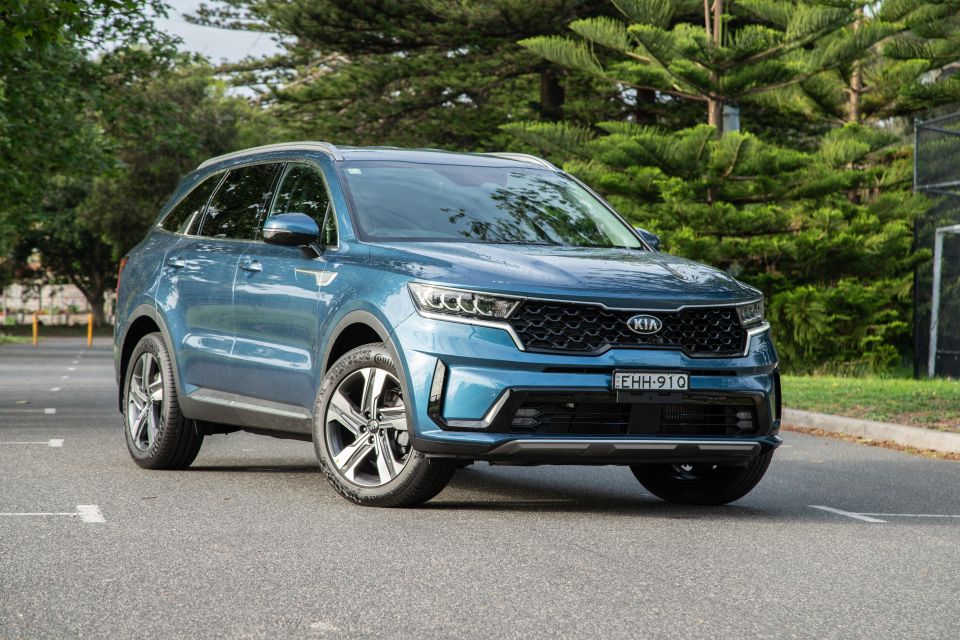
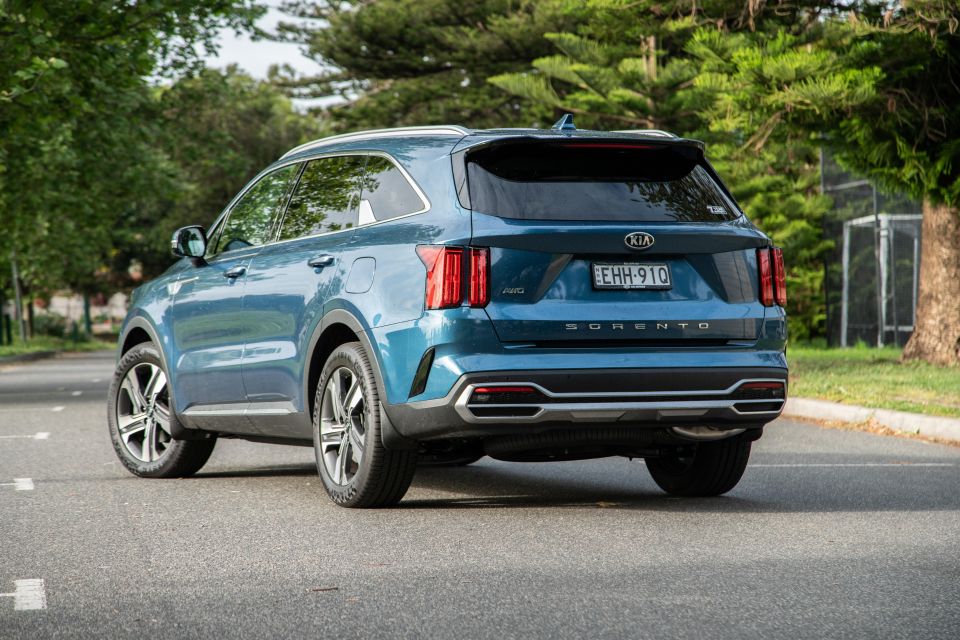

Contributor
New from
$42,990
excl. on-roads

Contributor
New from
$42,990
excl. on-roads


Contributor
New from
$42,990
excl. on-roads

Contributor
New from
$42,990
excl. on-roads
Quickly see how this car stacks up against its competition. Select any benchmark to see more details.
Where expert car reviews meet expert car buying – CarExpert gives you trusted advice, personalised service and real savings on your next new car.
Kia has been very open about its aspirations for the new Sorento.
Along with all the stuff the last one did well – carrying a family comfortably and reliably – the new Sorento has been tasked with moving the brand upmarket, winning the hearts and minds of buyers who previously mightn’t have considered a Kia.
Forget the Stinger, the Sorento is the brand-building, image-shaping flagship in the 2021 Kia line-up.

Although it’s not the range-topper, the Sorento Sport+ on test here isn’t short of presence. With a bluff nose, crisp flanks, and bold LED detailing at both ends, it’s certainly going to catch some eyes in the school carpark.
It’s a similar story inside, where Kia has thrown everything in its kit bag at the new Sorento.
The big question here? Whether the second-from-top Sport+ is a smarter buy than the range-topping GT-Line.
The Sorento Sport+ is priced from $54,390 drive-away with petrol power, or $57,390 drive-away with a diesel engine and all-wheel drive like our tester.
Across the range, diesel power commands a $3000 premium over the equivalent petrol model and brings all-wheel drive as standard.
Pricing for the Sorento range starts at $46,990 drive-away for the petrol Sorento S, and extends to $64,990 drive-away for the range-topping GT-Line diesel – read our review of the flagship here.
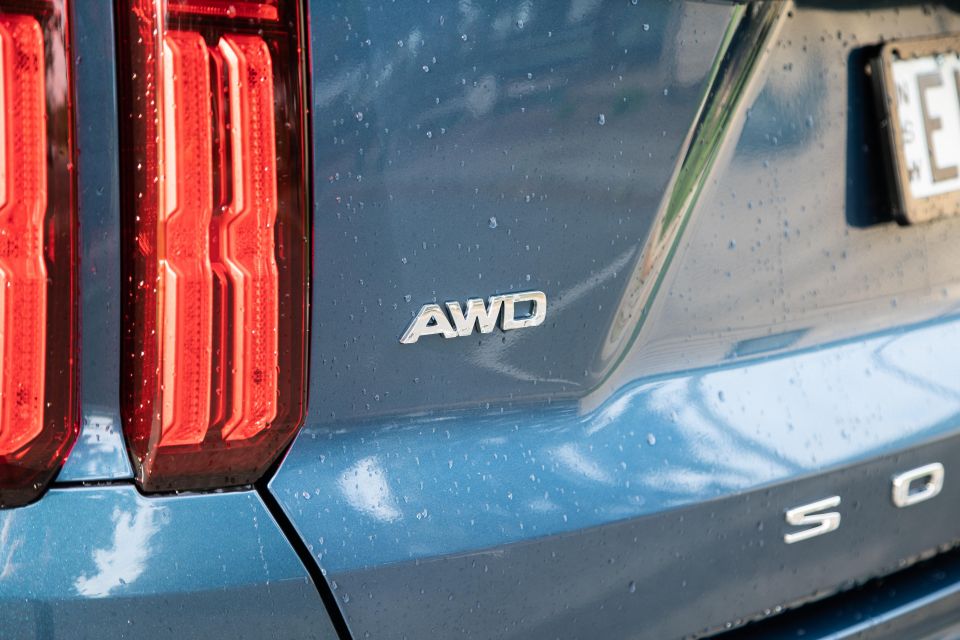
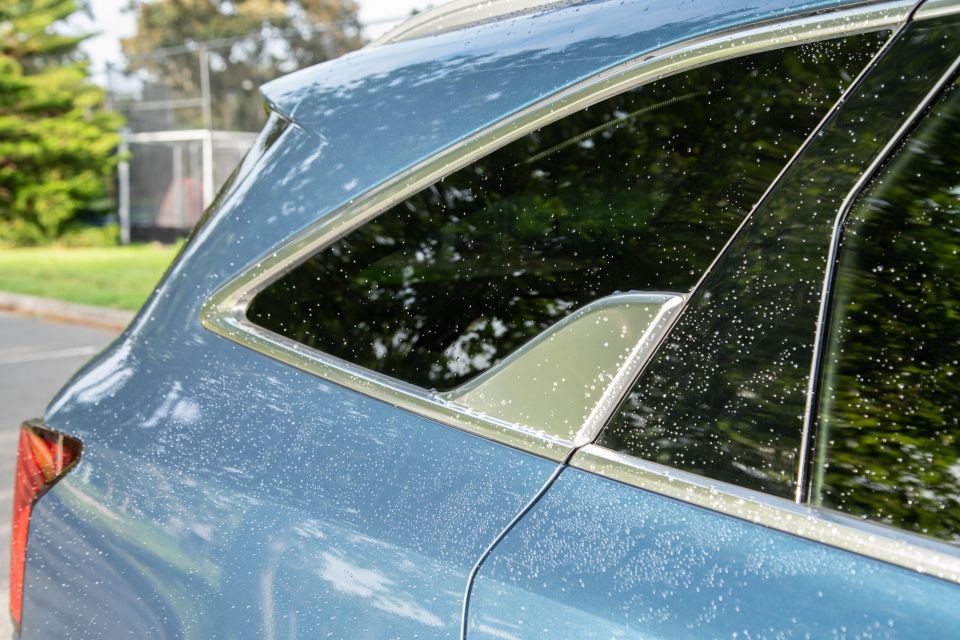
What don’t you get is a better question. Even though Kia will sell you a more highly-specified Sorento, the Sport+ wants for nothing.
Features borrowed from less expensive variants include autonomous emergency braking, blind-spot monitoring, rear cross-traffic alert, multi collision braking, LED lights at both ends, and a full complement of airbags.
The Sorento Sport+ on test here has a 10.25-inch infotainment touchscreen with Apple CarPlay, Android Auto, and factory satellite navigation, rather than the 8.0-inch unit on offer in the base model.
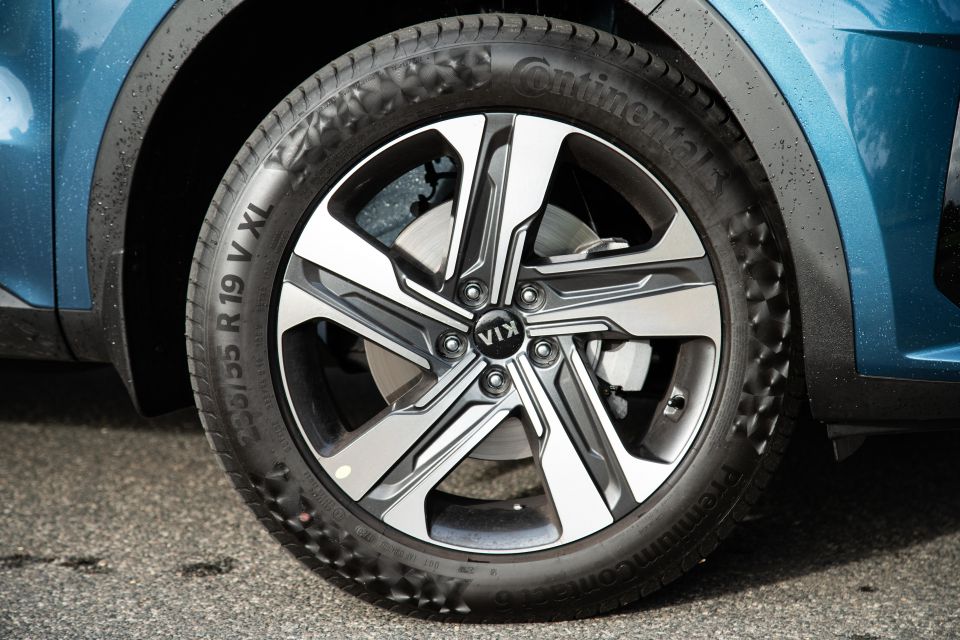
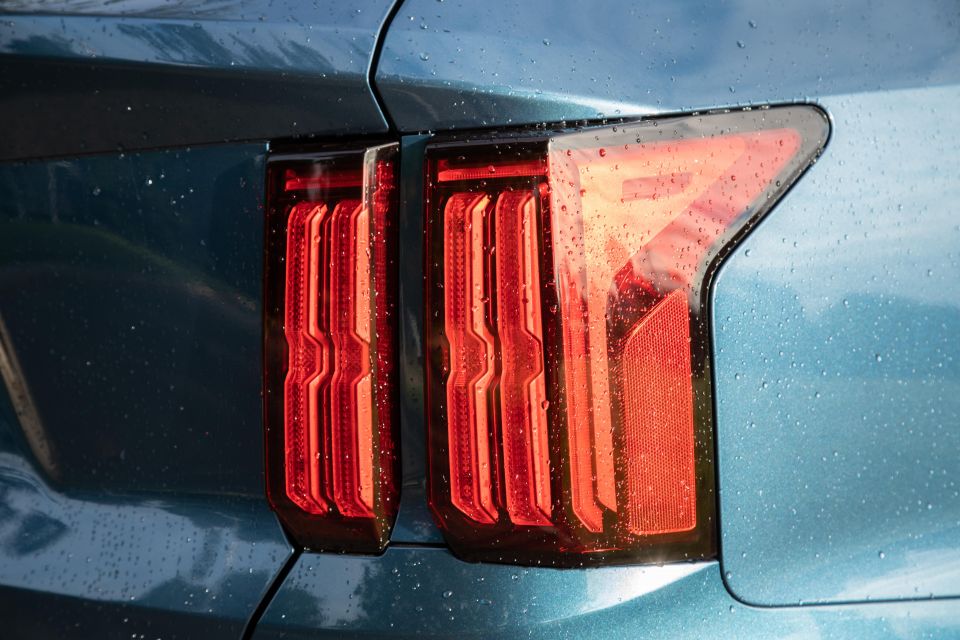
The seats are trimmed in leather and heated up front, and the driver has eight-way power adjustment with electric lumbar support.
You also get keyless entry and start, dual-zone climate control, a powered tailgate, a heated steering wheel, extra USB ports for rear-seat passengers, and 19-inch alloy wheels with a full-sized spare.
The new-generation Sorento is yet to be tested by ANCAP or Euro NCAP. We’d be surprised if it fell short of five stars, but a CarExpert safety score will have to wait until the official results are in.
The 2021 Sorento is packed with systems to stop you having a crash or protect you if an accident is unavoidable, however.
Active safety features include autonomous emergency braking with pedestrian, cyclist, and junction detection, lane-keeping assist with lane change assist, blind-spot monitoring, rear cross-traffic alert, auto high-beam, and driver attention monitoring, as well as adaptive cruise control with Lane Follow Assist for semi-autonomous highway driving.
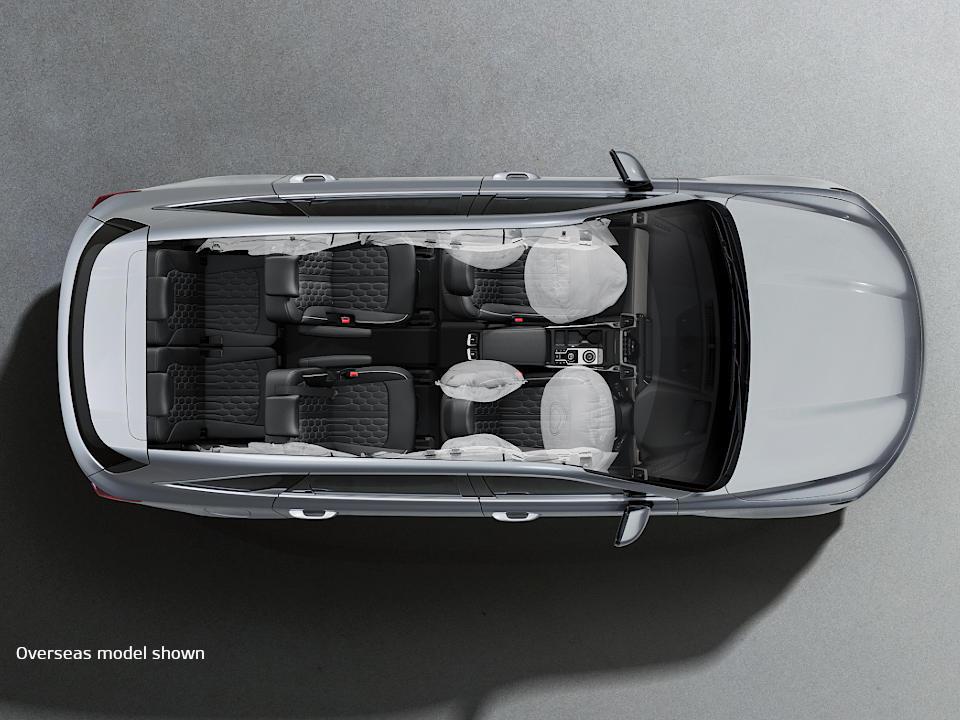
Beyond the suite of driver assistance technologies, the Sorento has dual front, front side and side curtain (first and second row) airbags as well as a class-first front centre inflator, and impact-sensing automatic door unlocking.
Being a three-row family SUV, the lack of curtain airbag coverage for the third row of seats could be a key consideration for buyers planning to use it regularly.
It’s also worth calling out the Sorento’s key rivals – the Mazda CX-9 and Toyota Kluger – are both fitted with airbags covering all three rows.
Kia has expertly tiptoed along a tricky tightrope with the 2021 Sorento. The balance of style and substance is close to perfect, which is no mean feat.
Starting in the front, the driver and passenger sit in heated leather-trimmed armchairs with more than enough adjustment to accomodate lanky drivers. The driving position is good, offering a commanding view over the road without making the driver feel like a tennis umpire.
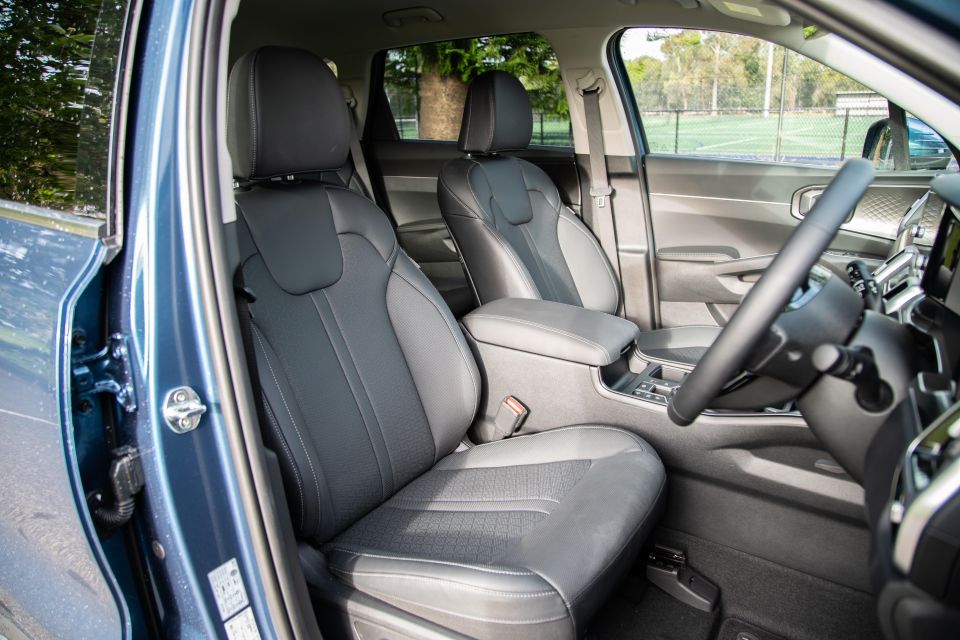
Kia’s designers have clearly spent plenty of time fussing over the dashboard design. Pride of place has been given to the 10.25-inch infotainment display, which is housed in a gloss black surround not dissimilar to what Mercedes-Benz does with its MBUX displays.
Unlike the three-pointed star, however, the software engineers in South Korea have seen fit to include shortcut buttons beside the display. Debuted in the smaller Seltos, the infotainment system is handsome to look at, intuitive to use, and quick to respond to inputs.
There’s some neat design touches, like the radio station readout designed to mimic vacuum tubes and the clean, simple home screen, although the placement of the Android-style home, back, and menu buttons in the top-left corner of the screen require a bit of reach.
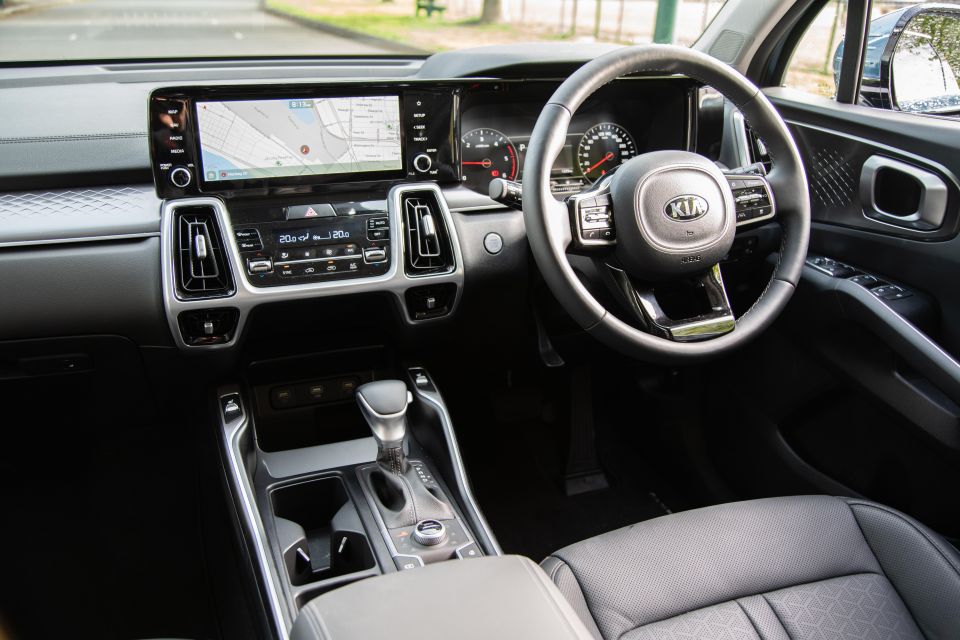
The widescreen infotainment system sits above a dedicated climate control pod (good) with gloss black trim and capacitive buttons (less good). The black trim is a magnet for fingerprints, but the fact Kia didn’t roll the climate controls into the touchscreen is a win for ergonomics.
Facing the driver are clean, simple dials and a colour trip computer capable of showing speed, fuel economy, and driver assist information. They aren’t as flashy as the digital dials in the flagship GT-Line, but they’re clear and easy to read on the move.
There’s an abundance of storage space up front, with a huge space for phones under the dashboard (but no wireless phone charger), two cupholders on the transmission tunnel, a deep bin under the central armrest, and spacious door pockets.
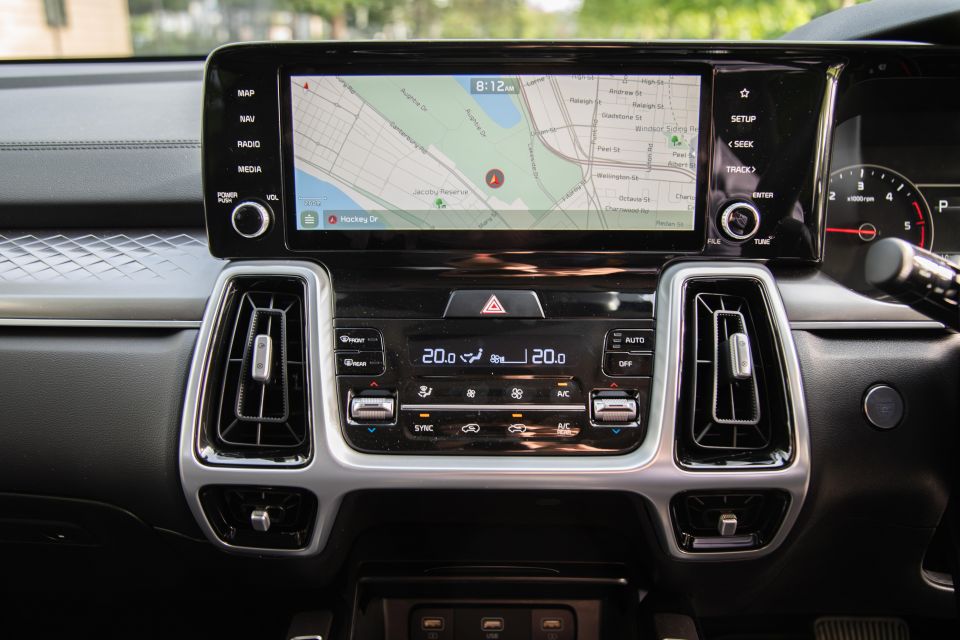
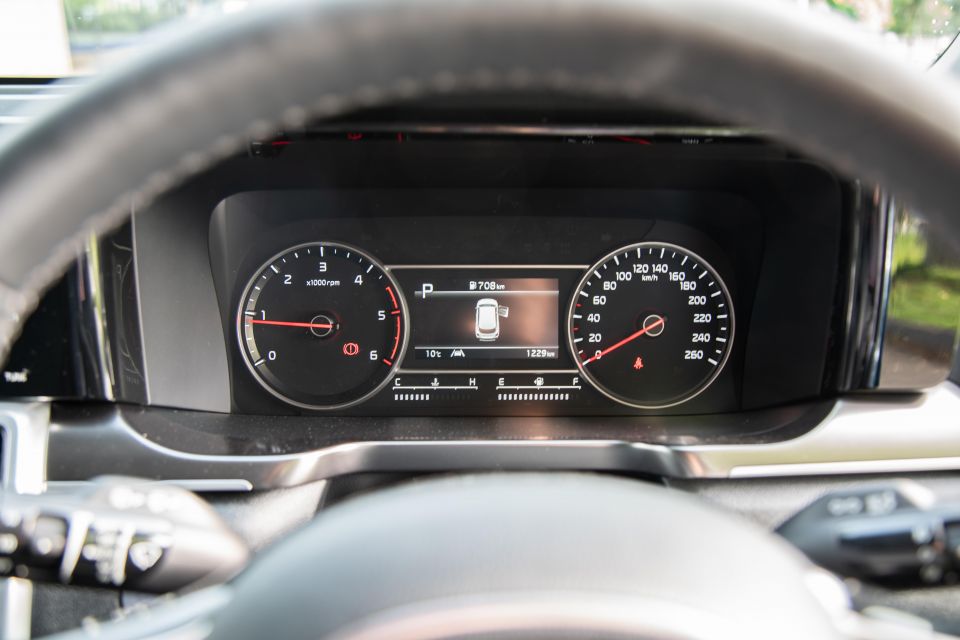
Kia offers an abundance of USB ports. Along with the three under the dashboard there are four for second row occupants and two in the third row. No-one’s phone is going flat in the Sorento, that’s for sure.
Second-row passengers are well catered for beyond charging options. Legroom and headroom are both impressive for even leggy teenagers and full-sized adults, to the point where six-footers can happily sit behind six-footers. Impressive.
In-door cupholders, a fold-down central armrest with cupholders, and seat back map pockets mean storage is taken care of, while the tall windows mean young children and short adults should still get plenty of light. Air vents feature, but there are no standalone fan or temperature controls in the second row.
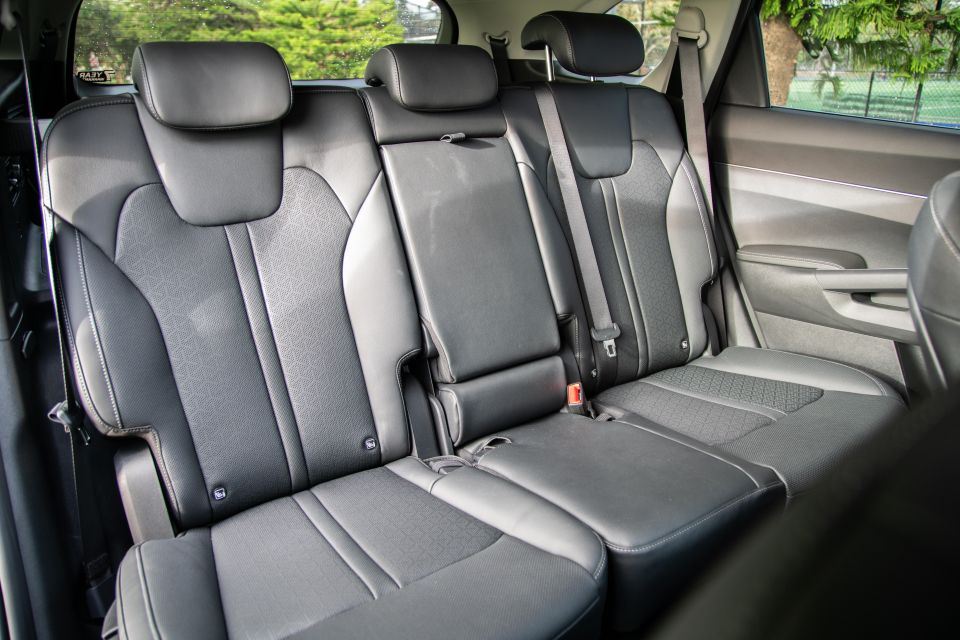
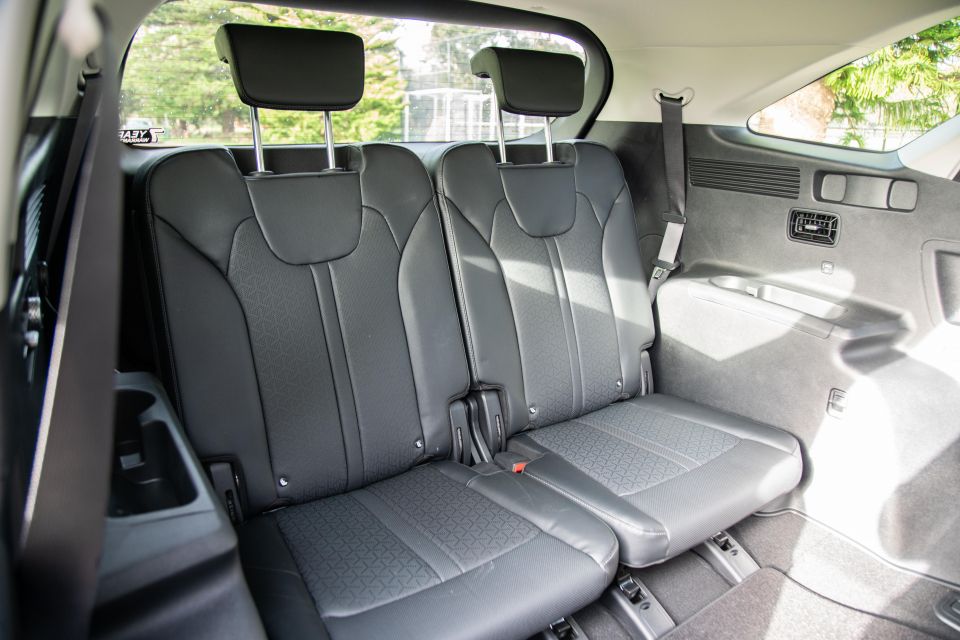
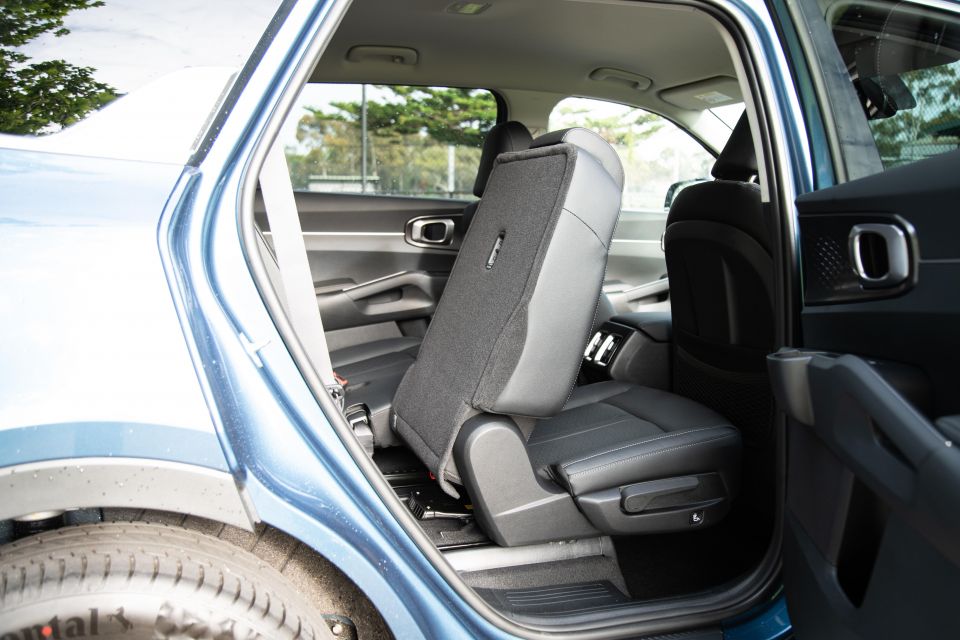
The third row is okay without being outstanding. As is usually the case in seven-seat SUVs, the rearmost seats are best reserved for younger children.
Kia’s neat one-touch folding system for the second row makes access easier, but it’s still a tight squeeze getting back there if you aren’t young and flexible.
Headroom is tight for adults, and the flat seat bases mean your knees will be up around your chin if you have long legs. Separate fan controls for the third row are a plus, as are the USB charge points and ample storage for a small bottle and phone.
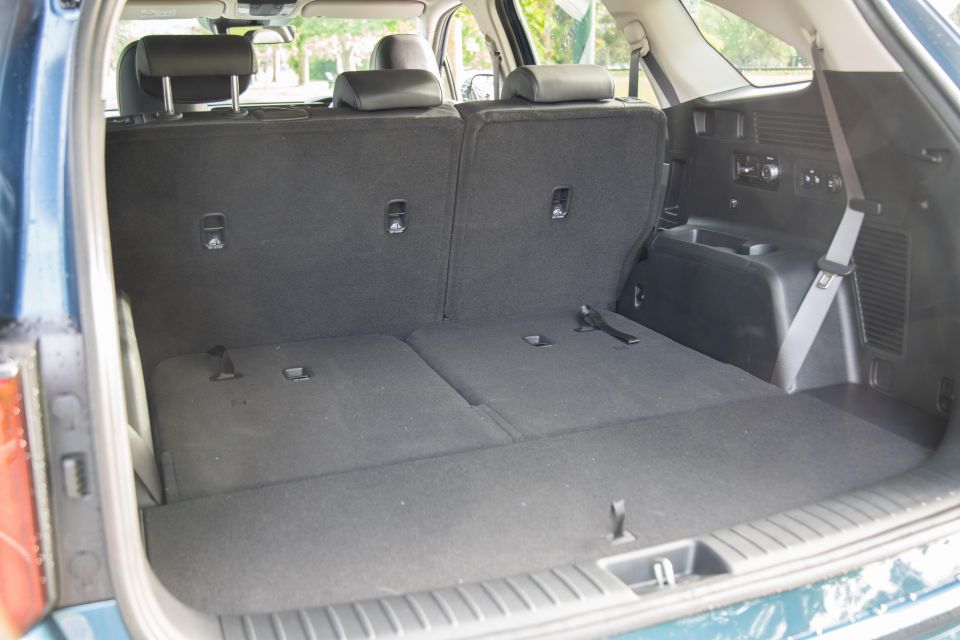
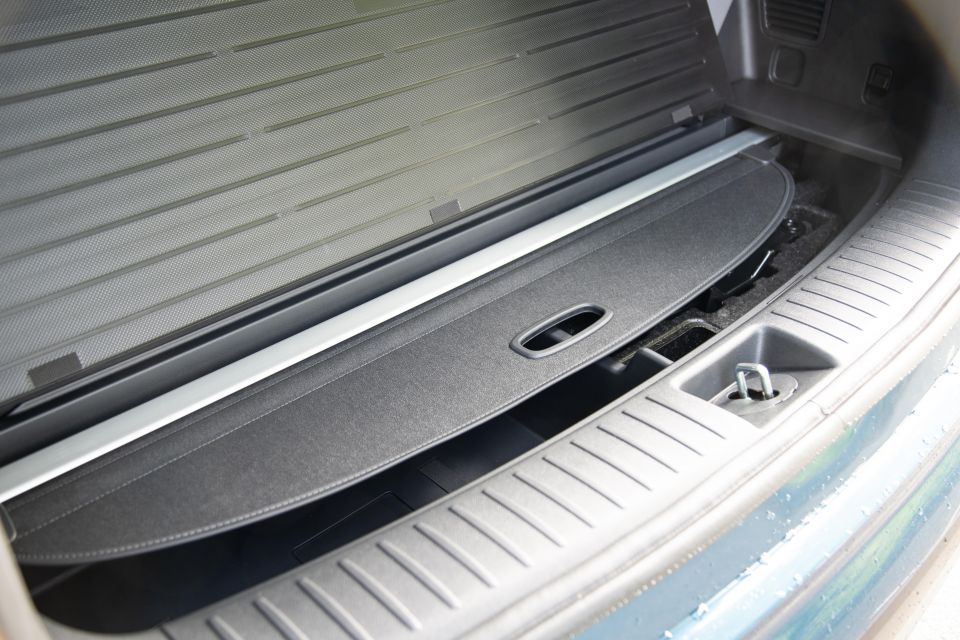
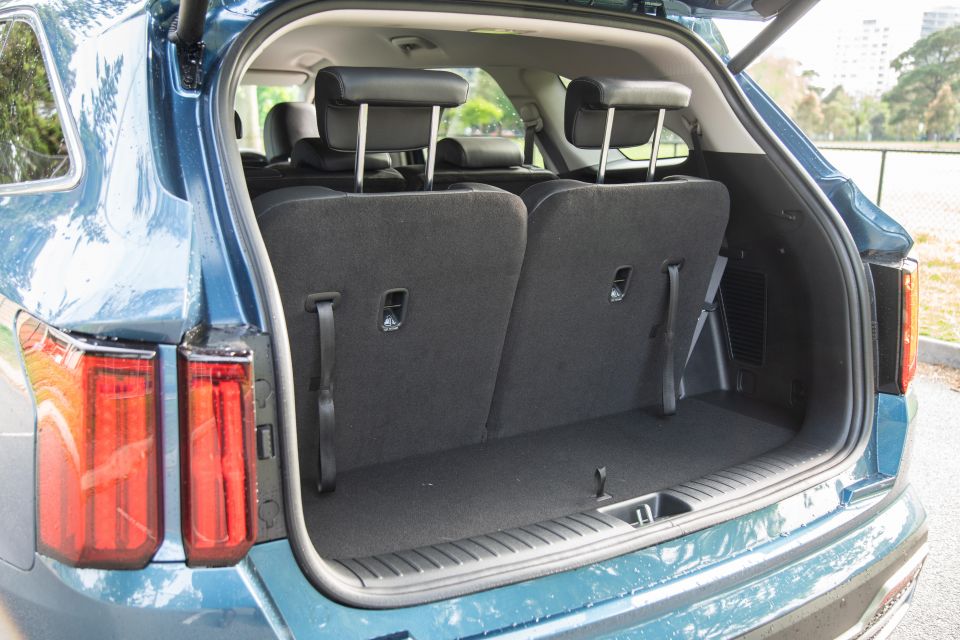
In terms of luggage space, the Sorento offers 187L with the third row in place, 616L in its five-seat layout and 2011L with the second and third rows folded flat.
All versions feature a full-size alloy spare under the boot floor, and there’s even space to spare to stow the rear cargo blind. That may seem like a small thing, but you’d be surprised how many vehicles in the class haven’t thought these things out so well.
Although the Sorento is available with a 3.5-litre, naturally-aspirated petrol V6 and front-wheel drive, our tester was fitted with the more expensive 2.2-litre turbo-diesel and all-wheel drive.
It makes 148kW of power at 3800rpm and 440Nm of torque between 1750 and 2750rpm, and a claimed fuel economy figure of just 6.1L/100km on the combined cycle.
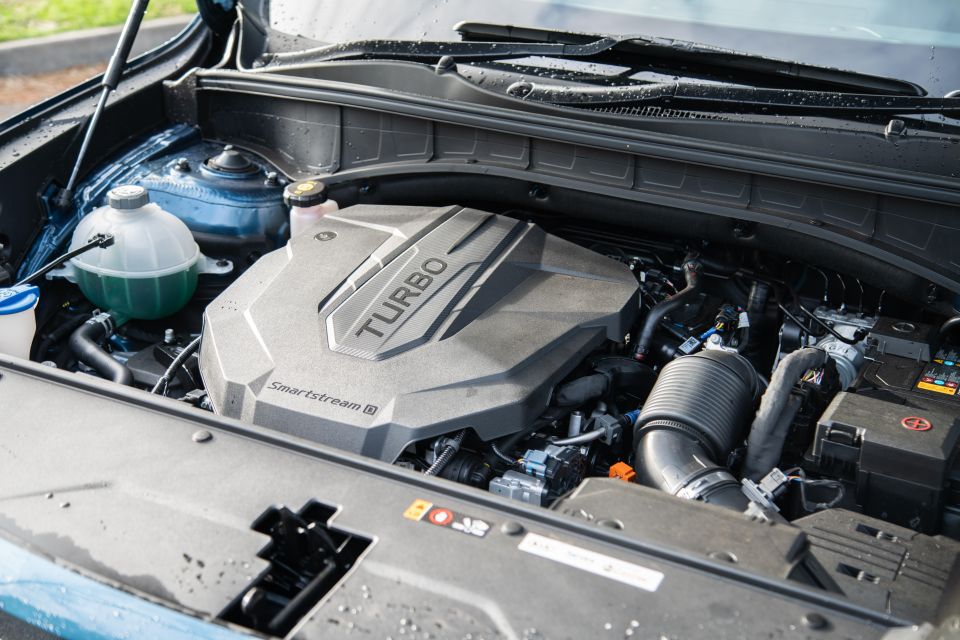
Although it shares its bones with the engine in the previous Sorento, the new turbo-diesel is 19.5kg lighter than before thanks to the switch from a steel to an aluminium construction.
Also new for 2021 is an eight-speed wet dual-clutch transmission, replacing the torque converter from the previous-generation car.
There’s a real polish to most of what the Sorento Sport+ does, albeit with one or two slightly rough edges.
Starting with the good, the Sorento might look big on the outside but it doesn’t feel big to drive from the inside. The glasshouse is tall, the driving position is commanding, and the corners of the bonnet are easy to spot.
Mix in light low-speed steering and a full gamut of active safety features, and there’s no excuse for a scraped rim, dinged bumper, or scratched door.
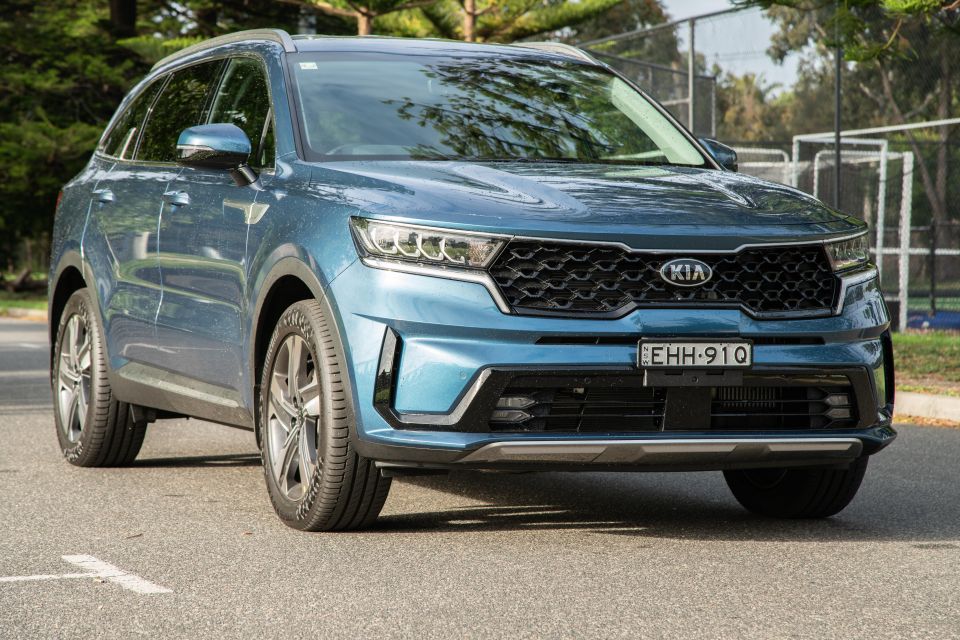
The turbo-diesel engine and eight-speed dual-clutch transmission are school-run friendly, too. Kia has tuned the engine to over-rev as soon as you lean on the throttle from standstill, instantly jumping to 2000rpm to make for a smoother, quicker getaway without the hesitation common in older dual-clutch transmissions.
The fact it’s a wet clutch setup means the transmission won’t burn itself out, and the fact there’s revs to play with means the Sorento doesn’t bog down and lurch around on light throttle inputs. It can occasionally get caught between first and second gear, though.
With peak torque on tap at just 1750rpm, the Sorento never has trouble getting up and moving. It feels strong off the mark, and in-gear response is excellent – aided by the fact the transmission is intelligent enough to change down quickly when more performance is required.
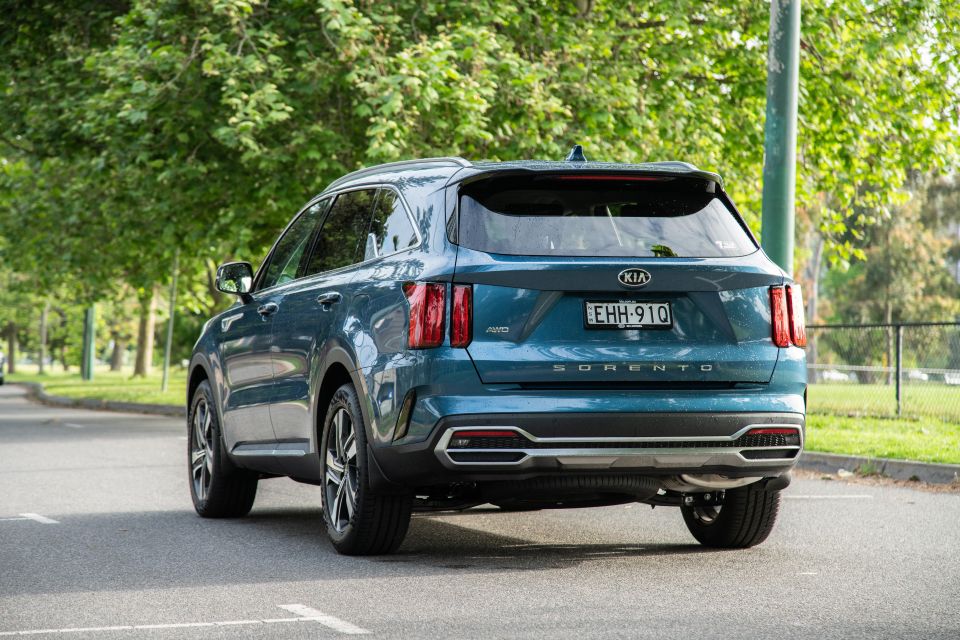
It’s also smooth and quiet once you’re on the move. There’s almost no wind noise from the mirrors on the highway, and the engine hums away in the background at cruising speed.
Unfortunately, it’s a bit rattly at a standstill. There’s vibration through the steering wheel and door trims, which isn’t really in keeping with the Sorento’s recent premium push.
Kia has decided not to fit start/stop to Australian models, which does feel like a bit of an oversight. For one, having the engine turned off at the lights would nip the vibrations in the bud – and fewer fumes being pumped into the air at school carparks by idling parents waiting for their kids can only ever be a good thing.
Don’t like start/stop? You can always turn it off, but having the choice is nice.
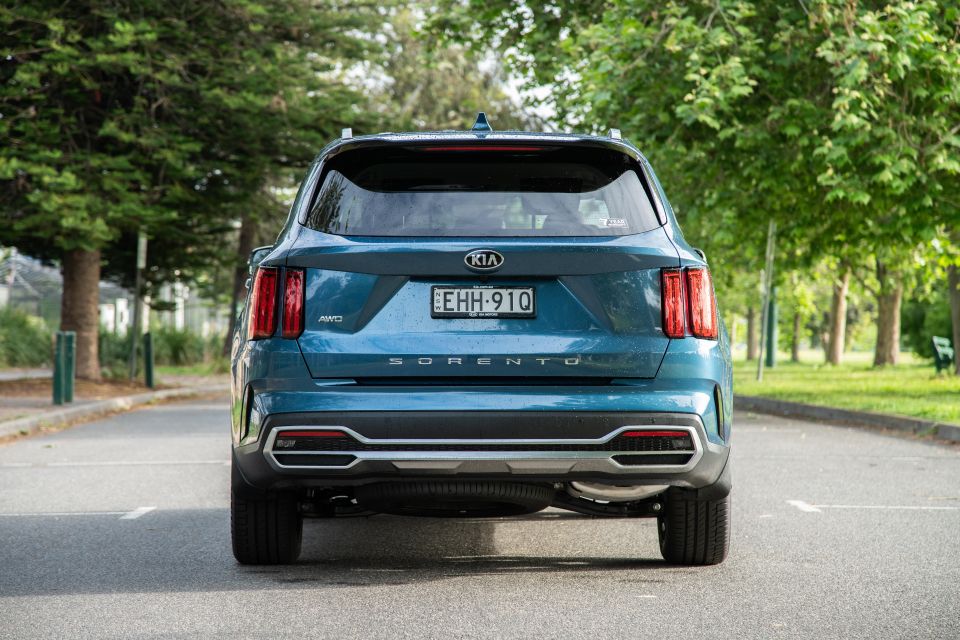
Where expert car reviews meet expert car buying – CarExpert gives you trusted advice, personalised service and real savings on your next new car.
The ride is generally good, especially at higher speeds. Big bumps are ironed out, although the rear suspension can feel a bit busy over tightly-packed, smaller imperfections when the back seats and boot are unladen. It’s definitely less comfortable than the base Sorento S, a fact that can likely be blamed on the bigger wheels fitted to our Sport+ tester.
Kia offers a seven-year, unlimited-kilometre warranty which remains one of the best in the industry.
You also get eight years of roadside assist for owners who service their cars within the dealer network. Maintenance is required every 12 months or 15,000km – whichever comes first.
The first seven visits will cost $335, $544, $408, $729, $377, $670, and $400 under Kia’s capped-price service plan.
These prices include the cost of things such as filters and oils, unlike some rival plans that throw in extra charges to keep the headline figure lower.
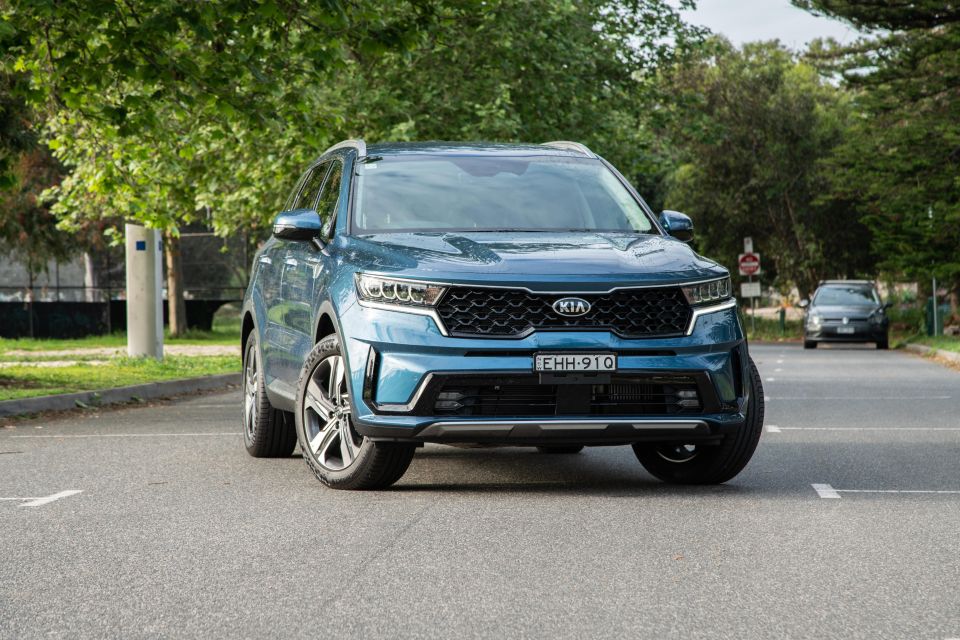
Although it’s not perfect, the Kia Sorento is a very good seven-seat family SUV.
What’s wrong with it? There’s a vertical choppiness to the ride at the rear, and the fact the curtain airbags don’t cover the third row is an oversight.
Otherwise, it ticks all the boxes and more. The turbo-diesel engine is punchy and refined on the move, the cabin treads the line between form and function, and the exterior is handsome enough to catch plenty of eyes in the school carpark.
Does the Sport+ make sense? It does. It’s arguably the sweet spot in the Sorento line-up, with everything you need and a healthy serving of luxuries, albeit not quite as many as the GT-Line.
Click the images for the full gallery
Where expert car reviews meet expert car buying – CarExpert gives you trusted advice, personalised service and real savings on your next new car.
Scott Collie is an automotive journalist based in Melbourne, Australia. Scott studied journalism at RMIT University and, after a lifelong obsession with everything automotive, started covering the car industry shortly afterwards. He has a passion for travel, and is an avid Melbourne Demons supporter.


Matt Campbell
6 Days Ago


James Wong
5 Days Ago


Max Davies
3 Days Ago


Josh Nevett
2 Days Ago


Josh Nevett
2 Days Ago


Paul Maric
13 Hours Ago